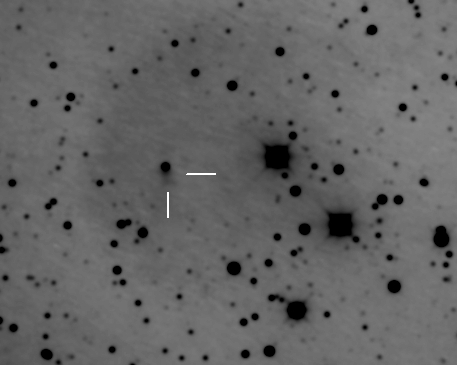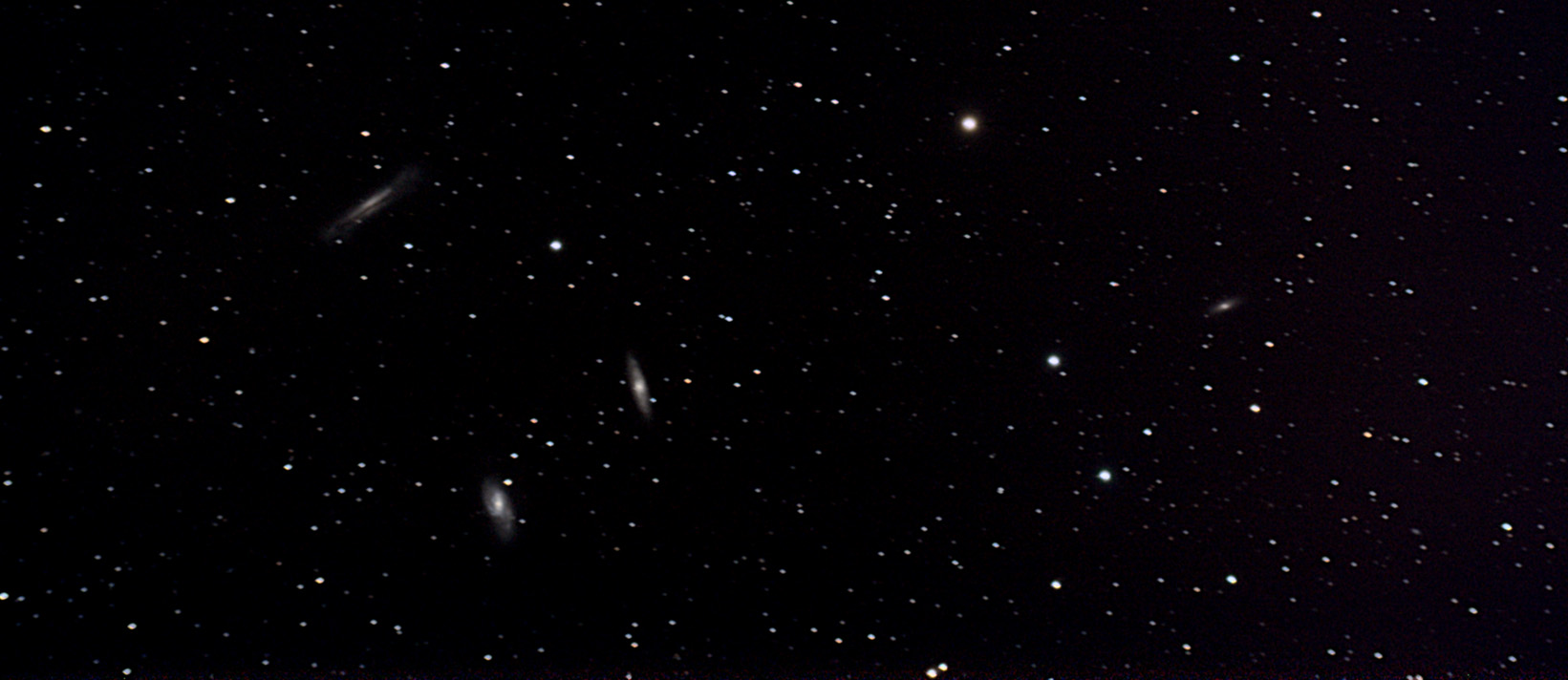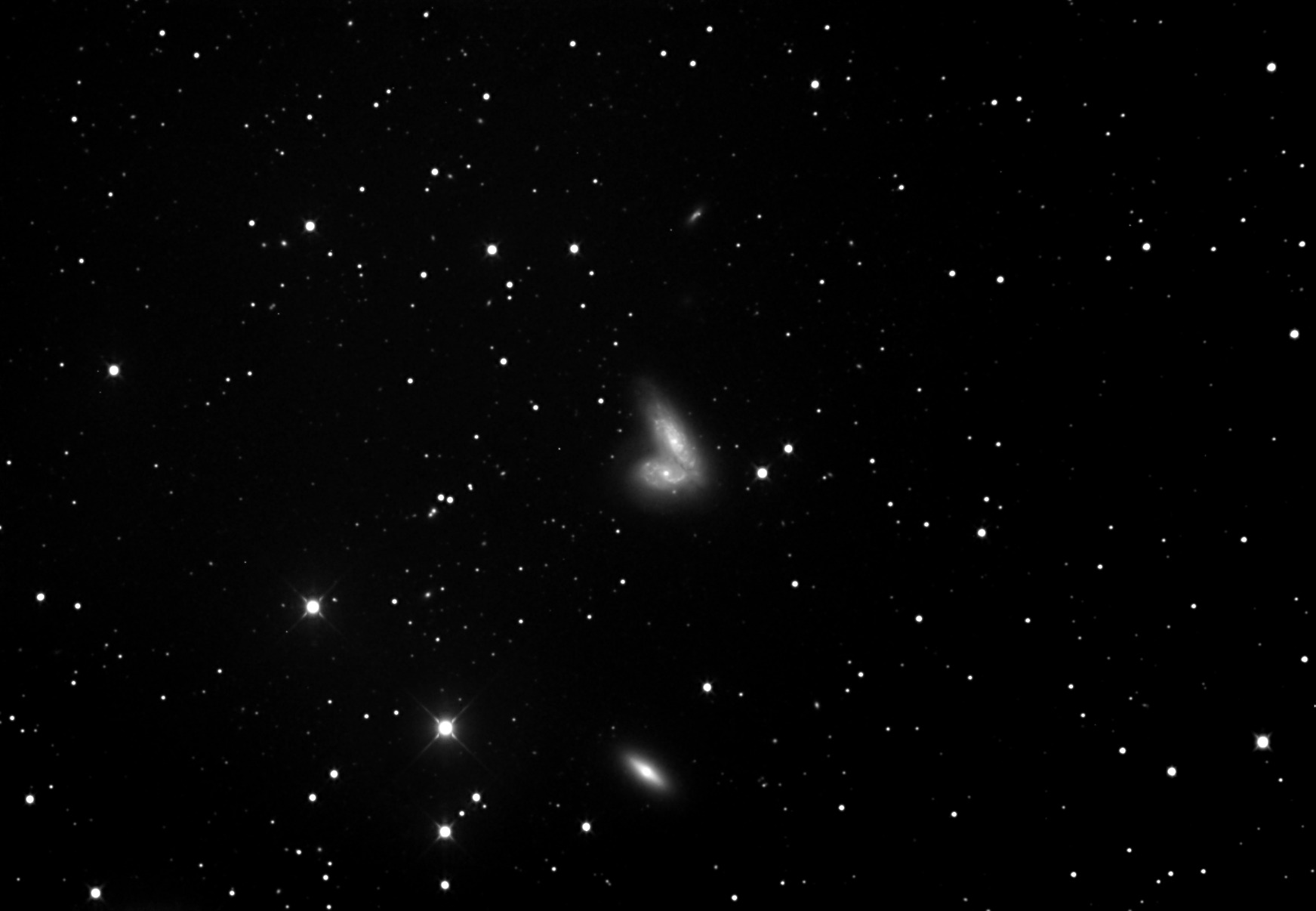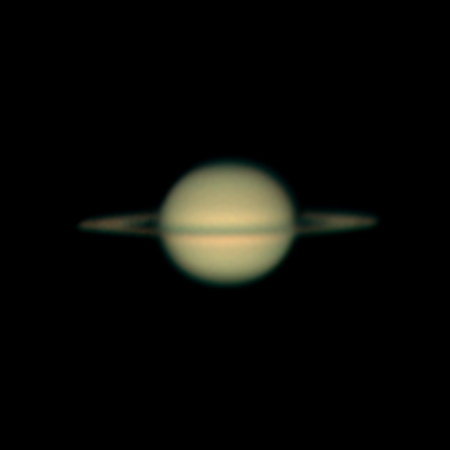I got an email to say that Gyulbudagian’s nebula was brightening again so grabbed ten 3 minute exposures just before dawn on Monday. Taking advantage of the 7 hour time difference between the UK and New Mexico made this a much more reasonable 11am.
While it’s possible to distinguish the nebula as a small fan shape this is still a very faint object. The brightest star in this image is Magnitude 10.1 and some of the faintest, 19.4
The telescope used was GRAS-1, a Takahashi Mewlon 300mm with FLI IMG1024 Dream Machine camera. I’ve written before about this camera with it’s 24 micron pixels. It’s very sensitive, but this system suffers from pronounced vignetting which isn’t entirely compensated for by the flat frames when the images are stretched as much as this one.





